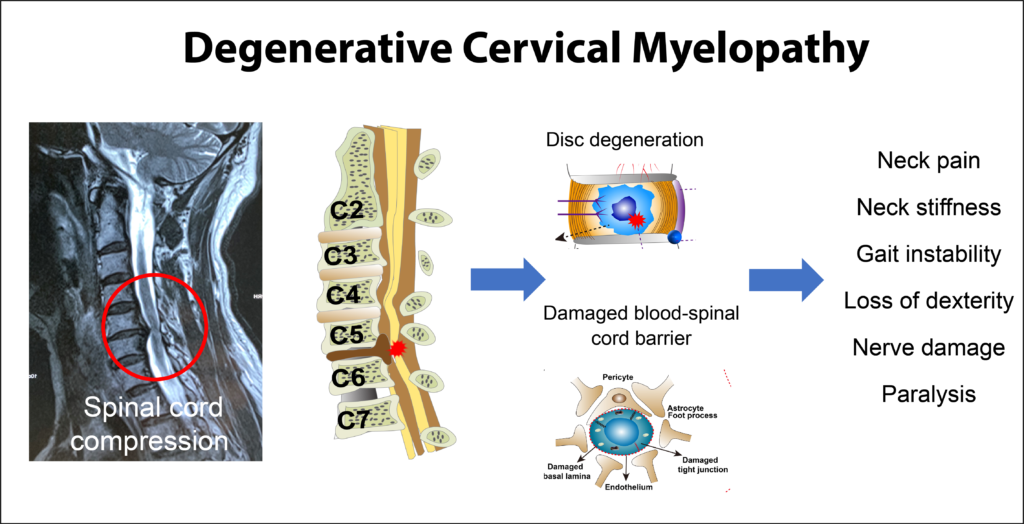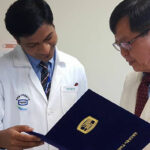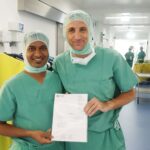
Cervical Myelopathy
Cervical myelopathy refers to the compression or damage of the spinal cord in the neck (cervical) region. Typically, it results from degenerative changes in the spine, such as herniated discs, bone spurs, or stenosis of the spinal canal, which can exert pressure on the spinal cord and disrupt its normal functions.
Cervical myelopathy can manifest in different degrees of severity and might develop gradually over time. Common symptoms include:
Neck pain: Persistent or recurrent pain in the neck that can extend to the shoulders or upper back.
Weakness in the arms and hands: Difficulty with fine motor skills, gripping objects, or performing tasks that require coordination.
Sensory changes: Numbness, tingling, or altered sensation in the arms, hands, or fingers.
Coordination and balance issues: Difficulty with balance, an unstable gait, clumsiness, and coordination problems.
Loss of fine motor skills: Difficulty with activities that require precise hand movements, such as buttoning a shirt or writing.
Muscle spasms: Involuntary muscle contractions or twitches, particularly in the arms or legs.
Bladder or bowel dysfunction: In severe cases, cervical myelopathy may lead to problems with urinary or bowel control. If cervical myelopathy is suspected, it is crucial to seek medical attention from a healthcare professional, orthopedic spine specialist, for a thorough evaluation. Diagnosis usually involves a combination of medical history, physical examination, imaging tests (e.g., MRI, CT scan), and sometimes additional diagnostic procedures like electromyography (EMG) or nerve conduction studies.
The treatment of cervical myelopathy aims to alleviate pressure on the spinal cord, manage symptoms, and prevent further progression. The most suitable treatment approach depends on the severity of the condition and individual factors. Common treatment options include:
Conservative management: Non-surgical approaches may comprise rest, physical therapy, pain medications, anti-inflammatory drugs, and the use of neck braces or collars to support the spine.
Steroid injections: In some cases, corticosteroid injections into the affected area may help reduce inflammation and relieve symptoms temporarily.
Surgical intervention: Surgery may be necessary if conservative treatments fail to alleviate symptoms or if there is significant spinal cord compression. The specific surgical procedure will depend on the underlying cause and may involve decompression (removing the source of compression) and stabilization of the spine.







